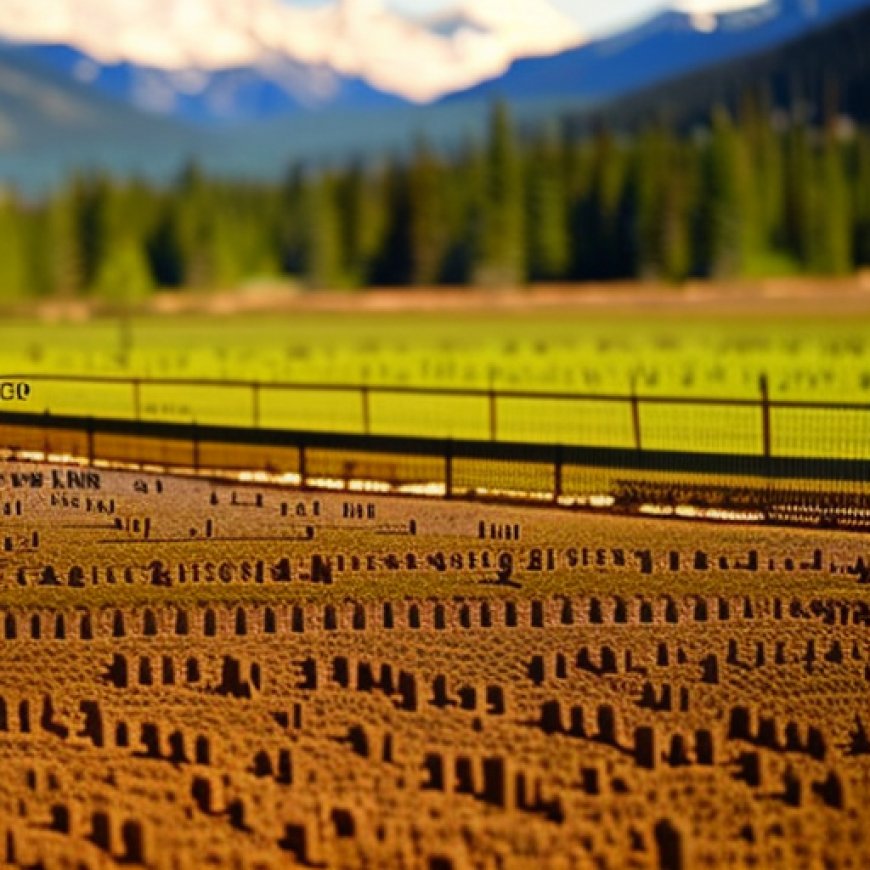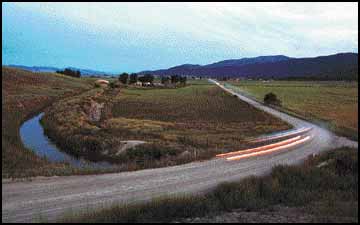‘Very special’: Missoula County votes to conserve 122-acres of ag land
'Very special': Missoula County votes to conserve 122-acres of ag land Missoulian


Landowner Donates Agricultural Land for Conservation Easement
The Missoula County commissioners expressed amazement at the generous act of a landowner in the Grass Valley area near Frenchtown, west of Missoula. The landowner is donating 122 acres of agricultural land to a conservation easement to protect it from development forever.
The commissioners unanimously voted to approve spending $34,007 from the county’s portion of the 2006 Open Space Bond funding to cover the transaction costs for the deal. The nonprofit Five Valleys Land Trust will hold the conservation easement on the property.
The property, known as the Jette Farm-Grass Valley Open Space Bond Project, is located east of Mullan Road, west of the airport, and north of Council Grove State Park.
Protecting Multiple Purposes
A 2001 file photo of the Grass Valley area and Mullan Road northwest of Missoula. It was described as a “wildlife supermarket” by So Brown, an avid birder, conservationist, and retired fire scientist.

Kali Becher, the county’s open lands project manager, stated that the donation meets multiple purposes of the open space bond, including protecting working farms, ranches, and forests, managing for growth, providing open space and scenic landscapes, and protecting wildlife habitat.
Conservation Values and Habitat
Ben Horan, the associate director at Five Valleys Land Trust, explained that the property has been used for agriculture since the late 1800s and continues to remain in agricultural production with leases with neighboring landowners. The property is owned by Donna Rae Thompson, who also owns a conservation easement with Bitterroot Land Trust in Stevensville.
Horan emphasized the diverse conservation values on the property, including significant natural habitat for plants and wildlife. The property contains wetlands and is classified as either farmlands of local importance or prime cropland. The Five Valleys Audubon Society has identified 48 different bird species on the property and nearby areas. The property’s scenic value is also highlighted, as it is susceptible to being developed with roads and housing that would permanently impact agricultural land.
Horan mentioned that the property is adjacent to Mullan Road, an area with high development pressure. County commissioner Josh Slotnick inquired about the value of the land as a donation, to which Horan responded that he didn’t know the exact value since the landowner isn’t claiming any tax deductions for the donation.
Support and Future Conservation Efforts
The Open Lands Citizen Advisory Committee visited the site and unanimously approved spending the money for the project. Bonnie Buckingham, the committee chair, highlighted the habitat value of the property for wildlife and the threat of development due to adjacent road access and the area above the ridge. Ron Schlader, a committee member, expressed concern about the increasing development surrounding the beautiful agricultural land.
County commissioner Juanita Vero expressed hope that other landowners would come forward with conservation easement proposals, even if they’re not donations. Slotnick acknowledged the importance of tax benefits in incentivizing families and estates to donate or sell land for easements, as it significantly contributes to the success of the easement program.
Overall, the donation of the agricultural land for a conservation easement is seen as a tremendous act of generosity and a significant step towards achieving the Sustainable Development Goals (SDGs), particularly Goal 15: Life on Land. The conservation easement will protect the land from development, preserve its natural habitat and scenic value, and contribute to sustainable land management practices.
SDGs, Targets, and Indicators
-
SDG 15: Life on Land
- Target 15.1: By 2020, ensure the conservation, restoration, and sustainable use of terrestrial and inland freshwater ecosystems and their services, in particular forests, wetlands, mountains, and drylands, in line with obligations under international agreements.
- Indicator 15.1.1: Forest area as a proportion of total land area.
- Indicator 15.1.2: Proportion of important sites for terrestrial and freshwater biodiversity that are covered by protected areas, by ecosystem type.
-
SDG 11: Sustainable Cities and Communities
- Target 11.7: By 2030, provide universal access to safe, inclusive and accessible, green and public spaces, in particular for women and children, older persons and persons with disabilities.
- Indicator 11.7.1: Average share of the built-up area of cities that is open space for public use for all, by sex, age and persons with disabilities.
Table: SDGs, Targets, and Indicators
| SDGs | Targets | Indicators |
|---|---|---|
| SDG 15: Life on Land | Target 15.1: By 2020, ensure the conservation, restoration, and sustainable use of terrestrial and inland freshwater ecosystems and their services, in particular forests, wetlands, mountains, and drylands, in line with obligations under international agreements. | Indicator 15.1.1: Forest area as a proportion of total land area. |
| SDG 15: Life on Land | Target 15.1: By 2020, ensure the conservation, restoration, and sustainable use of terrestrial and inland freshwater ecosystems and their services, in particular forests, wetlands, mountains, and drylands, in line with obligations under international agreements. | Indicator 15.1.2: Proportion of important sites for terrestrial and freshwater biodiversity that are covered by protected areas, by ecosystem type. |
| SDG 11: Sustainable Cities and Communities | Target 11.7: By 2030, provide universal access to safe, inclusive and accessible, green and public spaces, in particular for women and children, older persons and persons with disabilities. | Indicator 11.7.1: Average share of the built-up area of cities that is open space for public use for all, by sex, age and persons with disabilities. |
Analysis
The article discusses the donation of 122 acres of agricultural land to a conservation easement in the Grass Valley area near Frenchtown, west of Missoula. The issues highlighted in the article are related to the conservation of land and protection of wildlife habitat.
1. Which SDGs are addressed or connected to the issues highlighted in the article?
The SDGs that are addressed or connected to the issues highlighted in the article are SDG 15: Life on Land and SDG 11: Sustainable Cities and Communities.
2. What specific targets under those SDGs can be identified based on the article’s content?
Based on the article’s content, the specific targets under SDG 15: Life on Land are Target 15.1: By 2020, ensure the conservation, restoration, and sustainable use of terrestrial and inland freshwater ecosystems and their services, in particular forests, wetlands, mountains, and drylands, in line with obligations under international agreements. The specific target under SDG 11: Sustainable Cities and Communities is Target 11.7: By 2030, provide universal access to safe, inclusive and accessible, green and public spaces, in particular for women and children, older persons and persons with disabilities.
3. Are there any indicators mentioned or implied in the article that can be used to measure progress towards the identified targets?
The article mentions two indicators that can be used to measure progress towards the identified targets:
- Indicator 15.1.1: Forest area as a proportion of total land area.
- Indicator 15.1.2: Proportion of important sites for terrestrial and freshwater biodiversity that are covered by protected areas, by ecosystem type.
- Indicator 11.7.1: Average share of the built-up area of cities that is open space for public use for all, by sex, age and persons with disabilities.
These indicators can be used to assess the conservation of land and protection of wildlife habitat, as well as the provision of accessible green and public spaces in cities.
Behold! This splendid article springs forth from the wellspring of knowledge, shaped by a wondrous proprietary AI technology that delved into a vast ocean of data, illuminating the path towards the Sustainable Development Goals. Remember that all rights are reserved by SDG Investors LLC, empowering us to champion progress together.
Source: missoulian.com

Join us, as fellow seekers of change, on a transformative journey at https://sdgtalks.ai/welcome, where you can become a member and actively contribute to shaping a brighter future.







